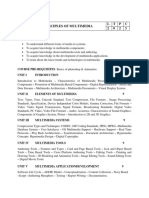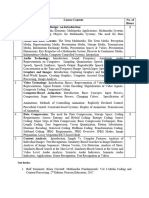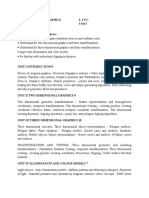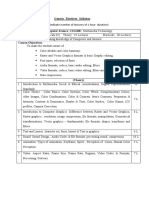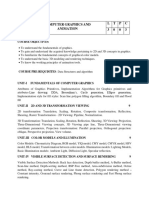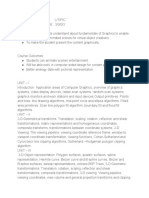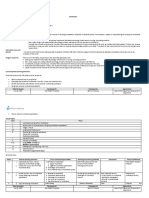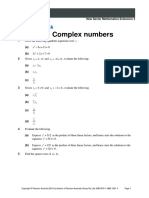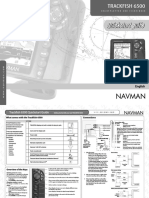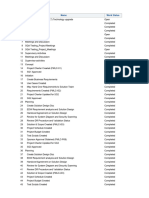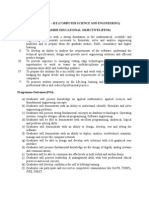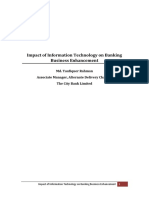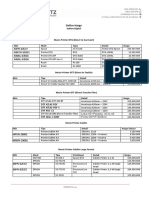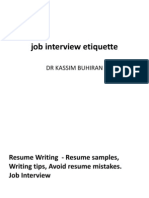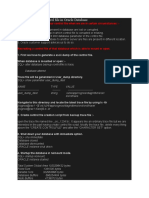JNTUA COLLEGE OF ENGINEERING (AUTONOMOUS):: ANANTHAPURAMU
**** DEPARTMENT OF COMPUTER SCIENCE & ENGINEERING****
II B.TECH – II SEMESTER(R-19)
Computer Graphics
L T P C
3 0 0 3
Course Objectives:
1. To Learn graphics hardware devices and software.
2. To understand the two-dimensional graphics and their transformations.
3. To Design computer animations
4. To Understand multimedia systems and formats
5. To Learn multimedia compression and transmission.
Unit-I: Graphic Systems: Video Display Devices, Raster-Scan System, Random-Scan
Systems, Graphics Monitors and Workstations, Input Devices, Hard-Copy Devices, Graphics
Software
2-D Transformations: Basic Transformations, Matrix Representations, Other
Transformations.
2D Viewing: The Viewing Pipeline, Viewing Coordinate Reference Frame, Window-to
viewport Coordinate Transformation.
3-D Concepts: Three-Dimensional Display Methods, Three-Dimensional Graphics
Learning outcomes:
1. Understand Graphics hardware and software (L1)
2. Describe 2D transformations and 3D Graphics (L1)
Unit-II: 3D Object Representation: Polygon Surfaces, Curved Lines and Surfaces, Quadric
Sutiaces, Super quadrics, Blobby Objects, Spline Representations, Particle Systems,
Physically Based Modeling.
3D Transformations: Translation, Rotation, Scaling and Other Transformations, Viewing
Pipeline, Viewing Coordinates, Projections.
Learning outcomes:
1. Learn surfaces and representations.(L1)
2. Use viewing when designing graphics. (L3)
Unit-III: Classification of Visible-Surface Detection Algorithms, Ray-Casting Method, Light
Sources, Basic Illumination Models,
Light: Properties of Light, Standard Primaries and the Chromaticity Diagram, Intuitive Color
Concepts, Design of Animation Sequences, General Computer-Animation, Functions, Raster
Animations, Computer-Animation Languages.
Learning outcomes:
1. Classify surface detection algorithms. (L3)
2. Understand Illumination models. (L1)
Unit-IV: Introduction to Multimedia: Historical Perspective, Multimedia Data and
Multimedia Systems, A Multimedia System Today ,The Multimedia Revolution, A Possible
Future.
Media Representation and Media Formats Digital Images, Digital Video, Digital Audio,
Graphics.
�Color Theory: The Color Problem, Trichromacity Theory, Color Calibration Color Spaces,
Gamma Correction and Monitor Calibration.
Learning outcomes:
1. Recognize different media types in multimedia (L1)
2. Understand media representation and formats (L2)
Unit-V : Compression: A Taxonomy of Compression, Practical Issues Related to
Compression Systems, The Need for Audio Compression, The Need for Graphics
Compression, 2D Graphics Objects: Points, Regions, Curves
Types of Predictions: I Frames, P Frames, B Frames, Multi-frame Prediction, Video
Structure—Group of Pictures , Video-Coding Standards:
Multimedia Communication: Modes of Communication, Multimedia Traffic Control,
Multimedia Networking Performance and Quality of Service.
Learning outcomes:
1. Understand need of compression (L1)
2. Experience the quality of service for multimedia applications(L4)
Textbooks:
1. Donald Hearn and Pauline Baker M, ―Computer Graphics - C Version”, Prentice Hall,
New Delhi, 2007 [ UNIT I – III ]
2. Parag Havaldar, Gerard Medioni "Multimedia Systems: Algorithms, Standards, and
Industry Practices" Course Technology ISBN: 1418835943, 9781418835941 [Unit IV- V]
References:
1. Andleigh, P. K and Kiran Thakrar, ―Multimedia Systems and Design‖, PHI, 2003.
2. Foley, Vandam, Feiner and Hughes, ―Computer Graphics: Principles and Practice,
2nd Edition, Pearson Education, 2003.
3. Jeffrey McConnel, ―Computer Graphics: Theory into Practice, Jones and Bartlett
Publishers,2006.
4. Peter Shirley, Michael Ashikhmin, Michael Gleicher, Stephen R Marschner, Erik
Reinhard, KelvinSung, and AK Peters, ―Fundamentals of Computer Graphics, CRC
Press, 2010.
5. Hill F S Jr., “Computer Graphics”, Maxwell Macmillan , 1990.
Course outcomes:
1. Design two dimensional graphics. (L6)
2. Apply two dimensional transformations. (L3)
3. Apply Illumination and color models. (L3)
4. Apply viewing techniques to graphics (L3)
5. Experience the quality of service for multimedia applications(L4)





